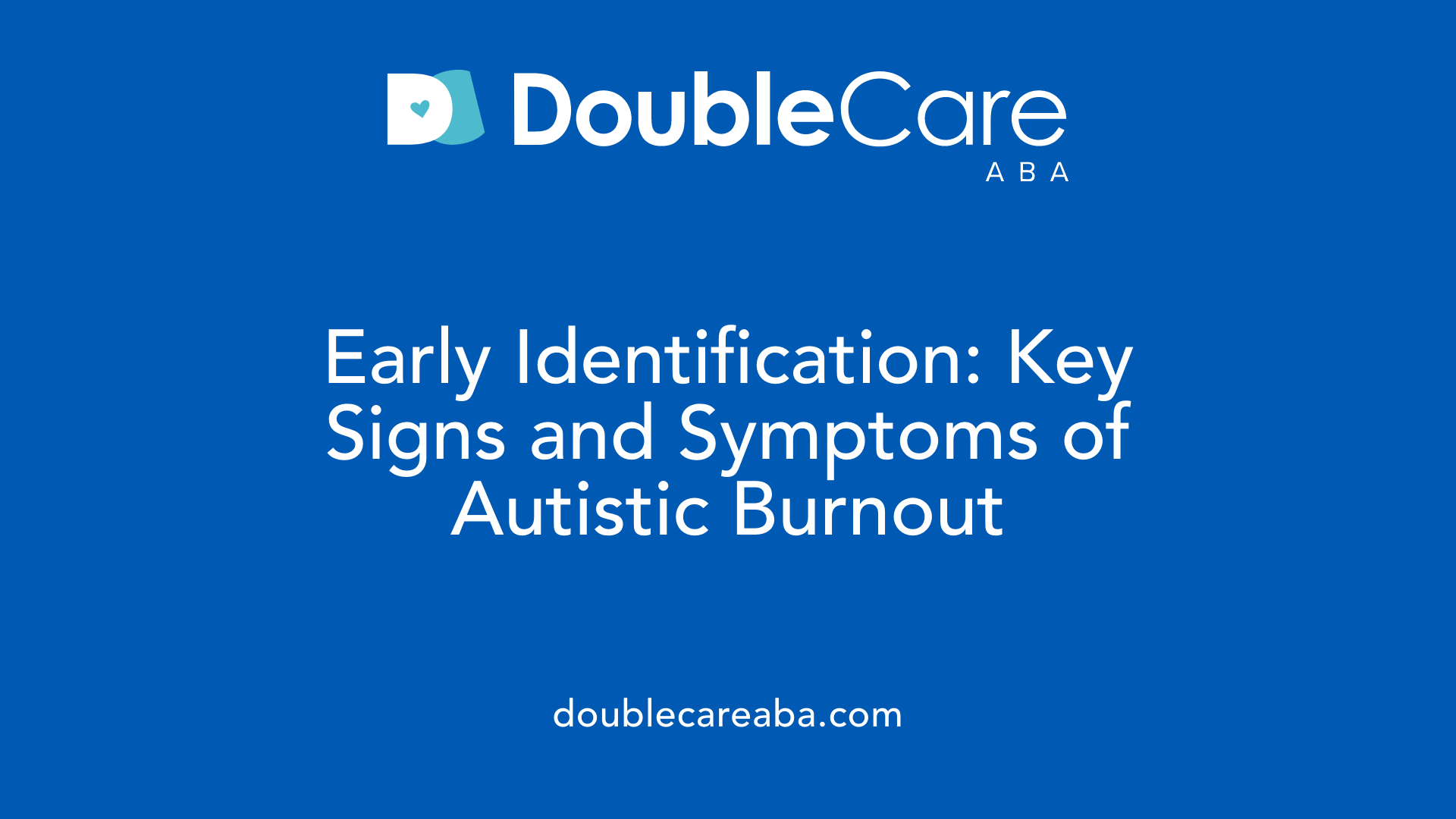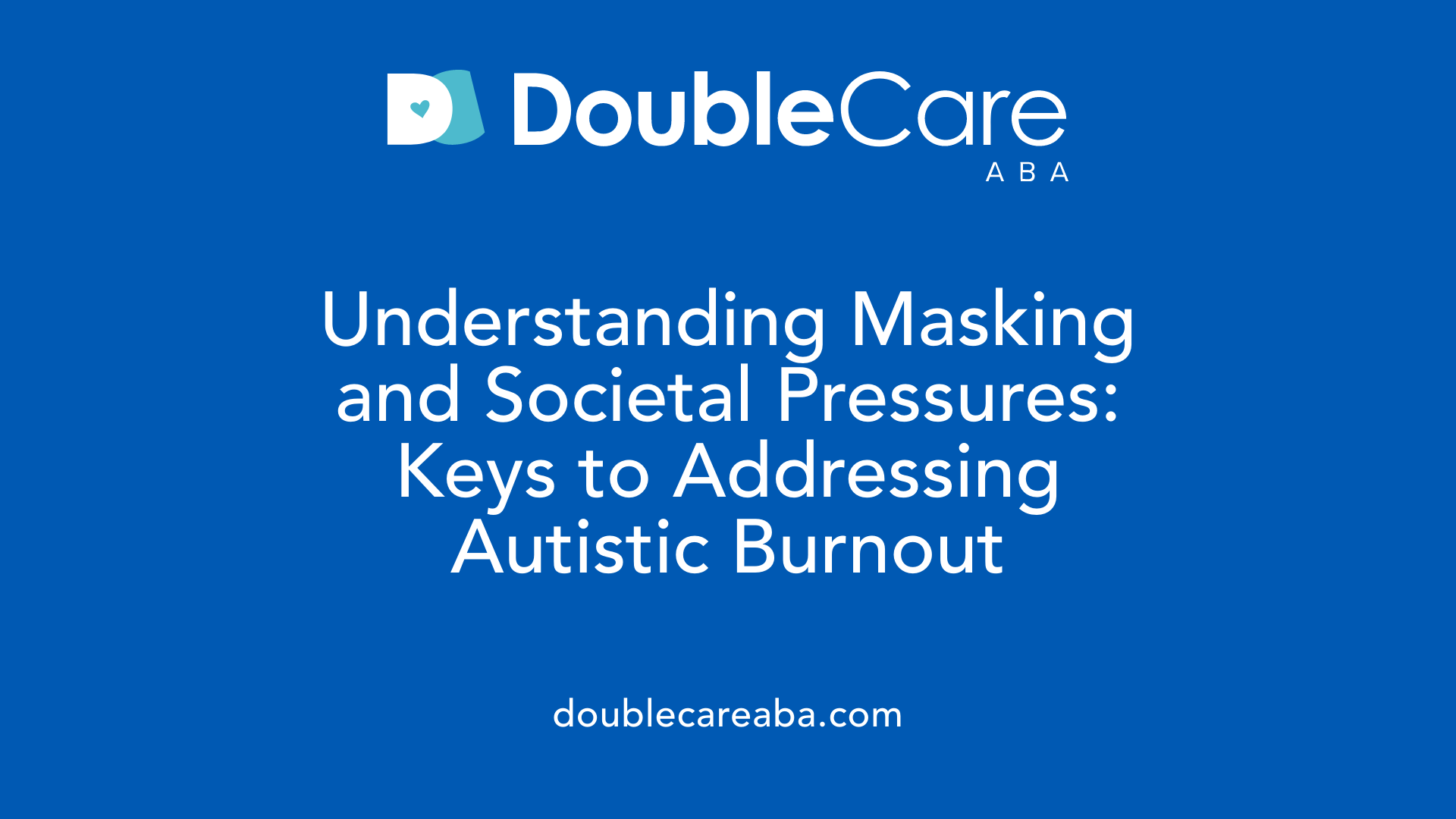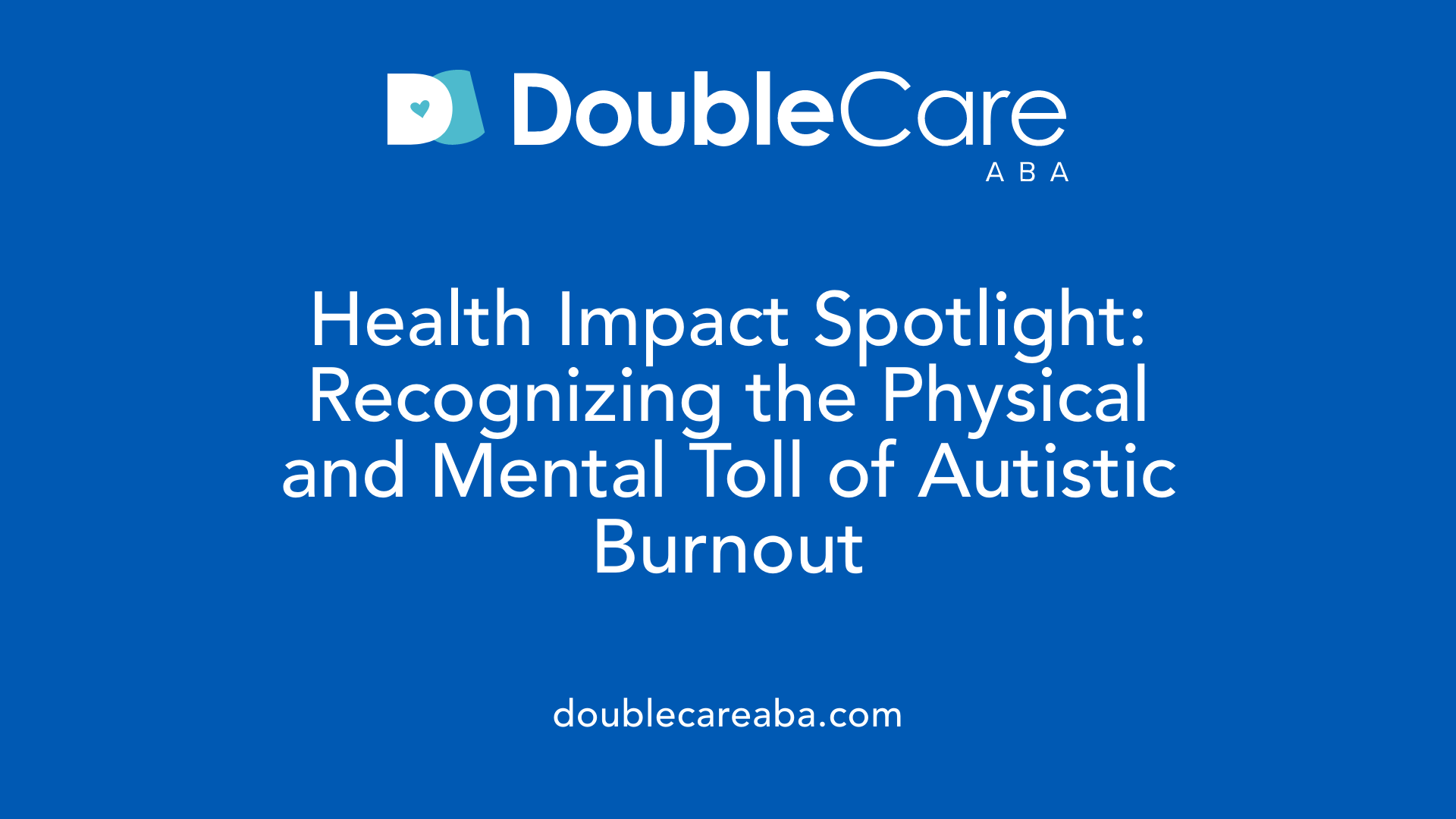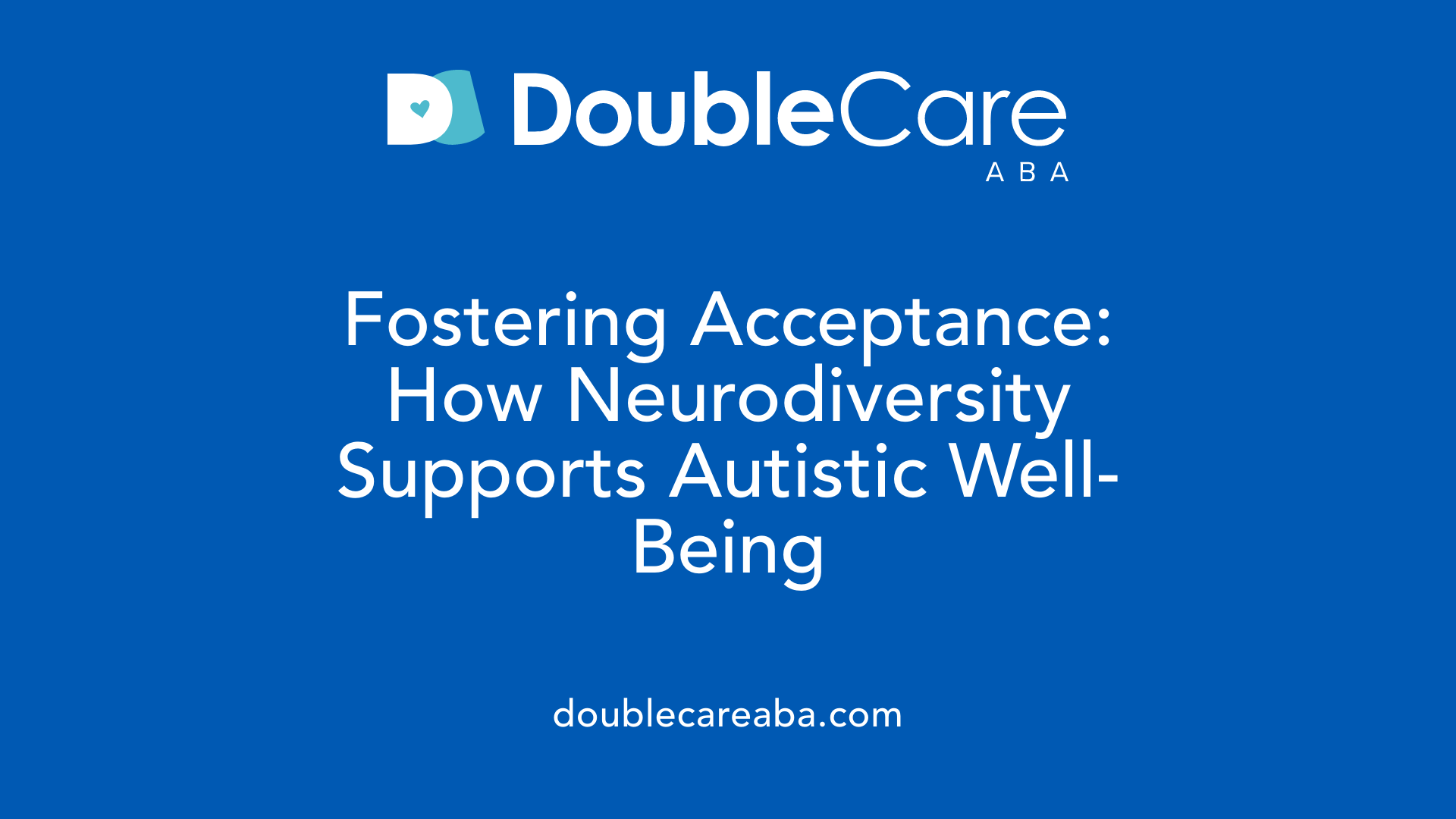Introducing Autistic Burnout
Autistic burnout is a profound and often misunderstood condition affecting many individuals on the autism spectrum. It manifests as intense mental, physical, and emotional exhaustion stemming from prolonged stress, sensory overload, and the relentless pressure to conform to neurotypical expectations. This article explores the causes, symptoms, and management strategies of autistic burnout, while also addressing the role of therapies such as Applied Behavior Analysis (ABA) and the importance of supportive environments.
Defining Autistic Burnout: Causes and Core Features

What is autistic burnout?
Autistic burnout is a state of intense mental, physical, and emotional exhaustion experienced by autistic individuals. It results from prolonged efforts to mask autistic traits and cope with unsustainable external demands. This exhaustion is not just tiredness but a profound depletion impacting daily functioning, cognitive abilities, and emotional well-being.
Primary causes including masking and chronic stress
One of the main drivers of autistic burnout is masking, where autistic individuals mimic neurotypical behaviors to fit into societal expectations. This constant effort to hide true traits can be mentally and emotionally draining. In addition, chronic stress caused by sensory and social overload, mismatched expectations, and inadequate support systems contributes heavily to burnout.
Phases and progression of burnout
Autistic burnout typically develops gradually through multiple phases:
- Buildup phase: Escalating stress and overwhelming demands.
- Burnout phase: Marked by chronic exhaustion, loss of previously acquired skills, increased sensory sensitivities, and executive dysfunction.
- Recovery phase: Rest and supportive interventions help regain strength and skills.
- Post-burnout phase: Most recovery has occurred, but susceptibility to future burnouts persists.
Understanding these phases helps individuals and caregivers identify burnout early and take steps to manage or prevent its progression.
Recognizing the Signs and Symptoms of Autistic Burnout

What Are the Symptoms of Autistic Burnout?
Autistic burnout manifests through a range of challenging symptoms. Individuals often experience chronic exhaustion that goes beyond typical tiredness. There is frequently a noticeable loss of previously acquired skills, including difficulties with speech, executive function, and daily living activities. Heightened sensory sensitivities to lights, sounds, and touch become common, further amplifying discomfort.
Other symptoms include depressive signs, increased feelings of anxiety, and withdrawal from social interactions. Sleep disturbances and more frequent meltdowns or emotional crises are also typical. Repetitive behaviors or stimming may intensify as a coping mechanism to manage sensory overload and emotional distress.
What Are the Cognitive and Physical Impacts?
Cognitive challenges during burnout can impair attention, memory, and organizational skills, making tasks feel overwhelming. Physically, individuals may suffer from headaches, muscle tension, gastrointestinal problems, and disrupted sleep patterns. Long-term stress linked to burnout can increase the risk of more serious health concerns such as cardiovascular issues.
How Is Autistic Burnout Different From Other Mental Health Conditions?
Autistic burnout shares some features with mental health issues like depression and anxiety but is distinct due to its roots in prolonged masking of autistic traits, sensory overload, and the chronic stress of navigating environments not designed for neurodivergent needs. Recognizing this difference is vital to ensure that support addresses the unique causes and manifestations of burnout rather than solely treating secondary mental health symptoms.
Understanding these signs early promotes timely intervention through rest, support, and adjustment of demands, which are critical to recovery and maintaining well-being.
The Role of Masking and Social Expectations in Autistic Burnout

What Are Masking Behaviors and Their Consequences?
Masking refers to the conscious or unconscious effort autistic individuals make to hide or suppress their autistic traits in order to fit into social norms. This can include mimicking neurotypical behaviors, controlling stimming, or forcing eye contact. Although masking may help avoid social stigma or misunderstandings, it requires a significant amount of mental and emotional energy.
Prolonged masking often leads to intense exhaustion and can be a direct contributor to autistic burnout. Because masking suppresses natural coping mechanisms, it leaves individuals vulnerable to overwhelming stress, sensory overload, and mental fatigue.
How Do Societal Norms and Expectations Impact Autistic Individuals?
Society tends to favor neurotypical behaviors and often lacks adequate understanding or accommodations for autistic differences. This mismatch places continuous pressure on autistic individuals to conform to unrealistic expectations. Social environments expecting constant adaptation and masking create chronic stress.
These persistent demands exacerbate feelings of isolation and depletion. The pressure to navigate social norms without sufficient support mechanisms can escalate stress levels and hasten the onset of burnout.
How Does Camouflaging Autistic Traits Lead to Exhaustion?
Camouflaging involves suppressing natural behaviors and adopting alternative strategies to blend in. This effort is mentally taxing and reduces the energy available for essential cognitive and emotional functions.
Over time, this exhaustion accumulates, resulting in a state of burnout characterized by diminished executive functioning, increased sensory sensitivities, and loss of previously mastered skills. When individuals reduce masking, stimming behaviors often increase as a natural response to regulate sensory input and emotions.
Providing spaces that recognize and accept autistic traits, including stimming, alongside promoting neurodiversity, can alleviate the burden that leads to burnout.
Physical and Mental Health Consequences of Autistic Burnout

What Physical Health Issues Are Associated with Autistic Burnout?
Autistic burnout can lead to several physical health problems. Common symptoms include frequent headaches, muscle tension, and gastrointestinal issues such as stomachaches or digestive disturbances. Sleep disruption is also prevalent, often resulting in insomnia or fragmented sleep patterns. Over long periods, the chronic stress linked to burnout may elevate risks for more serious conditions, including cardiovascular problems.
What Mental Health Challenges Do Individuals with Autistic Burnout Face?
Mental health impacts are significant with autistic burnout. Individuals often experience heightened anxiety and depression. Emotional regulation becomes more difficult, leading to mood swings and increased irritability. Social withdrawal is common, as the effort to engage with others becomes overwhelming. Alarmingly, there is an increased risk of suicidality, emphasizing the need for timely mental health support tailored to autistic individuals.
What Are the Long-Term Health Risks of Autistic Burnout?
Chronic stress from autistic burnout can contribute to long-term health problems beyond immediate symptoms. Prolonged exposure to stress hormones may impair immune function and increase vulnerability to chronic illnesses. Cardiovascular disease risk is notably higher due to sustained physiological strain. These health consequences underline the importance of recognizing and managing autistic burnout early.
| Aspect | Examples | Explanation |
|---|---|---|
| Physical Issues | Headaches, muscle tension, gastrointestinal problems | Result from ongoing sensory overload and stress |
| Sleep Disruption | Insomnia, fragmented sleep | Leads to fatigue and difficulty in daily functioning |
| Mental Health | Anxiety, depression, emotional regulation issues | Impact social interactions and quality of life |
| Long-Term Risks | Cardiovascular disease, weakened immune system | Result of chronic stress hormone exposure |
Understanding these consequences helps in forming comprehensive support and intervention plans for autistic individuals experiencing burnout.
Management and Prevention Strategies for Autistic Burnout
Establishing Boundaries and Self-Care
Effectively managing autistic burnout begins with setting clear boundaries to reduce overwhelming demands. This includes limiting social interactions when necessary and adjusting sensory inputs to prevent overload. Prioritizing self-care activities such as rest, mindfulness, and adequate sleep helps replenish energy and supports emotional regulation.
Building Supportive Networks
A strong, understanding support system is vital. Connecting with friends, family, or others in the autistic community who recognize the challenges of burnout can provide emotional support and practical advice. Supportive networks help individuals feel accepted and reduce the pressure to mask autistic traits.
Allowing Authentic Behavior Like Stimming
Encouraging authentic autistic behaviors, such as stimming (repetitive movements or sounds), is essential. Stimming helps individuals regulate sensory input and emotions, especially during times of stress or burnout. Creating environments where stimming is accepted can significantly improve coping and reduce exhaustion.
Seeking Professional Support Familiar with Autism
Professional mental health support from clinicians experienced with autism can be highly beneficial. Therapies like occupational therapy and counseling tailored to autistic needs help develop adaptive strategies for sensory management and emotional resilience. Advocating for reasonable accommodations at work or school further reduces burnout risk.
Together, these strategies foster sustainable well-being by addressing the unique challenges faced by autistic individuals, promoting recovery, and preventing future episodes of burnout.
Applied Behavior Analysis (ABA) Therapy: Support and Controversies
What is Applied Behavior Analysis (ABA) therapy?
Applied Behavior Analysis (ABA) therapy is a scientifically-backed approach that focuses on understanding and modifying behavior through positive reinforcement and individualized programming. It primarily aims to teach communication, social, academic, and daily living skills to individuals with autism. Techniques such as task analysis and shaping are commonly used to build these skills step-by-step.
How does ABA therapy help individuals with autism?
ABA therapy supports individuals by promoting positive behaviors and reducing harmful or challenging ones through structured, personalized interventions. It facilitates skill acquisition in areas such as communication, socialization, and independence, which in turn can enhance an individual's quality of life.
Who typically provides ABA therapy?
ABA therapy is delivered by trained professionals including Board-Certified Behavior Analysts (BCBAs), Registered Behavior Technicians (RBTs), and other certified specialists. These practitioners collaborate to design and implement treatment plans tailored to each individual's unique needs.
What evidence supports the effectiveness of ABA therapy?
A substantial body of research demonstrates that ABA therapy can significantly improve social skills, communication abilities, adaptive behaviors, and cognitive functioning in autistic individuals. The greatest gains are usually observed when therapy begins early and is provided intensively over time.
Are there any criticisms or concerns regarding ABA therapy?
Despite its benefits, ABA therapy has faced criticism. Some argue that it can prioritize conformity to neurotypical behaviors rather than embracing neurodiversity, which may lead to emotional distress and increase masking behaviors. Historically, aversive techniques once used in ABA have been widely condemned. These concerns underline the importance of sensitive, individualized approaches that focus on positive reinforcement and respect for the autistic person's authentic self.
| Aspect | Description | Notes |
|---|---|---|
| Definition | Behavioral approach to skill-building using reinforcement | Focus on communication, social, and daily living skills |
| Providers | BCBAs, RBTs, certified specialists | Collaborative team-driven intervention |
| Effectiveness | Shown to improve social, communication, cognitive skills | Most effective with early, intensive intervention |
| Criticisms | Risk of promoting masking, conformity, emotional distress | Calls for neurodiversity-affirming, trauma-informed avoidance of aversive methods |
| Relation to Burnout | Masking promoted by some ABA practices may contribute to autistic burnout | Highlights need for supportive, individualized intervention |
Creating Supportive Environments: Embracing Neurodiversity to Mitigate Burnout

Why Is Societal Acceptance Crucial for Reducing Autistic Burnout?
Society plays a vital role in lessening the impact of autistic burnout by fostering acceptance and providing reasonable accommodations. When autistic individuals are accepted without pressure to mask or conform to neurotypical norms, stress diminishes, helping prevent exhaustion and sensory overload.
Inclusive environments that welcome neurodiversity help reduce chronic stressors linked to burnout. Examples include sensory-friendly spaces, flexible workplace or school expectations, and public awareness campaigns promoting autism acceptance.
How Does Encouraging Authentic Behaviors Like Stimming Help?
Stimming—repetitive movements or noises like hand-flapping or rocking—serves as a natural coping mechanism for sensory regulation and emotional balance in autistic people. Encouraging, rather than suppressing, these behaviors helps individuals effectively manage stress.
During burnout, stimming often intensifies as a way to soothe overwhelming sensory input and emotional dysregulation. Supportive environments acknowledge the importance of this self-regulation and accommodate it, reducing the risk of further burnout.
What Role Do Professional Therapies Play?
Occupational therapy and Applied Behavior Analysis (ABA) provide structured ways to build adaptive coping strategies and manage sensory sensitivities. Therapists trained in autism can tailor interventions that respect neurodiversity while improving executive functioning and daily living skills.
Appropriate therapies assist in preventing burnout by helping individuals navigate sensory and social challenges with less strain, supporting long-term well-being.
How Can Community Support and Advocacy Make a Difference?
Connections with other autistic individuals and advocacy groups offer emotional support and validation. Sharing experiences about burnout enhances understanding and encourages self-advocacy.
Community efforts promote acceptance, educate the public, and push for policy changes that prioritize accommodations and inclusion. This collective action creates a more supportive climate that reduces the triggers of autistic burnout.
Moving Forward with Awareness and Support
Autistic burnout is a complex and impactful condition requiring increased awareness, early recognition, and compassionate support. While therapies such as ABA can play a beneficial role when implemented thoughtfully, it is essential to prioritize neurodiversity-affirming approaches that respect individual autonomy and promote authentic living. Creating inclusive environments that accommodate sensory needs and encourage genuine behaviors can reduce the incidence and severity of burnout. Ongoing research and community-led advocacy remain vital to developing effective strategies to support the well-being and resilience of autistic individuals facing burnout.
References
- Understanding Autistic Burnout Symptoms and Their Impact
- Autistic burnout: When navigating a neurotypical world ...
- What to Know About Burnout & Stimming Behaviors
- Autism Burnout: Causes, Symptoms and Coping Strategies
- Understanding Autistic Burnout
- Applied Behavior Analysis (ABA)
- The Top 10 Reasons Children With Autism Deserve ABA
- 6 Benefits of ABA Therapy for Children with Autism














